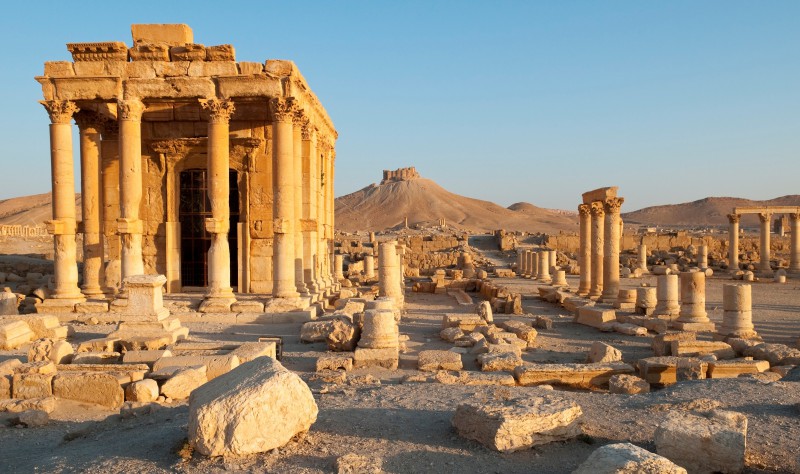
Experts address weaknesses and inconsistencies in the U.S. regulation of looted cultural artifacts.
After the U.S. invasion of Iraq, looters stole thousands of Iraqi artifacts, which may now be purchased online for relatively low prices. Although the United States has returned many of these artifacts, thousands have slipped through the cracks. Service members have allegedly brought home stolen artifacts as war trophies without repercussion. One museum in Washington, D.C. has a history of purchasing looted Iraqi artifacts. Despite a $3 million fine, the museum is struggling to identify all of the stolen artifacts to be returned.
A patchwork of laws and international agreements currently governs the transport and sale of illegally obtained cultural artifacts in the United States. The National Stolen Property Act (NSPA) makes it illegal to transport stolen artifacts across state lines but only covers items worth more than $5,000.
The NSPA also does not apply to museum collections that were illegally or unethically obtained in the past. For example, the Penn Museum holds a collection of skulls acquired in the 19th century that includes the crania of individuals who were enslaved in Cuba and the United States. Facing pressure from the public, the museum recently moved the skulls to storage and announced that it would try to repatriate or bury the skulls, but U.S. law does not require these actions.
Native American artifacts, on the other hand, receive additional protection under U.S. law. The Archaeological Resources Protection Act (ARPA) makes it illegal to damage or remove without authorization artifacts from federal and Native American lands. ARPA also prohibits the buying, selling, exchanging, or transporting of items obtained illegally under the act. The Native American Graves Protection and Repatriation Act (NAGPRA), meanwhile, facilitates the repatriation of Native American artifacts held by museums or agencies that receive federal funding. Yet, looters have stolen thousands of Native American artifacts including human remains, likely from burial grounds. Repatriation of these items is a slow and difficult process.
In this week’s Saturday Seminar, experts weigh in on how U.S. policymakers can strengthen the legal regime that governs stolen cultural artifacts to deter looting and reduce the illegal trade.
- Trading in stolen cultural property presents unique regulatory challenges as looters and dealers can exploit gaps in the patchwork of legal systems and laws targeting the practice, Derek Fincham, professor at South Texas College of Law Houston argues in a Cardozo Arts and Entertainment Law Journal article. He explains that, in the United States, seizure and forfeiture of looted artifacts is currently the prevailing regulatory response to looting. This regulatory response fails, he claims, because prosecutors have fewer incentives to obtain criminal convictions against looters and dealers when it is easier to just seize the artifacts. To address the problem, Fincham advocates increased criminal liability for traffickers and more resources devoted to prosecuting those who knowingly deal in looted objects.
- Federal regulators should oversee the museum acquisition of antiquities, Leila Amineddoleh of Fordham School of Law argues in an article published in the Fordham Intellectual Property, Media and Entertainment Law Journal. Federal regulation is necessary and justified, Amineddoleh claims, in part because the illegal antiquities market has funded terrorism. “Museums play a crucial role in the black market art network,” Amineddoleh reports. One way to decrease black market demand for illegal items––disrupting one avenue of funding for terrorist organizations––is to ensure the legality of all museum acquisitions. She proposes increased penalties for complicit museums and more aggressive prosecution of the museum representatives responsible for questionable acquisitions.
- The Islamic State (ISIS) has devastated Syria’s once-robust cultural heritage, and the terrorist organization has destroyed and looted “artifacts from the oldest civilizations in the world,” Lindsey Lazopoulos Friedman claims. In an article for the University of Miami Law Review, she discusses how the McClain doctrine—the idea that U.S. courts recognize foreign governments as owning undiscovered antiquities in their jurisdiction—may be hampering efforts to quell demand for Syrian cultural property. The McClain doctrine has strict requirements to confirm government ownership of cultural property such as proof of origin and that traffickers knew the artifacts belonged to the government, which are difficult to prove in Syria’s case. Freidman suggests that relaxation of the McClain doctrine requirements and heightened enforcement of the NSPA against buyers may be more effective in stopping ISIS looting.
- The U.S. laws governing antiquities are inconsistent, William G. Pearlstein of Pearlstein McCullough argues in a white paper. For example, under the Convention on Cultural Property Implementation Act (CPIA), the U.S. Department of State can restrict the import of cultural artifacts to comply with international law. But, Pearlstein explains, importers of artifacts might be liable under criminal or customs law even if they adhere to the requirements of the CPIA. To make the legal regime more coherent, he proposes six reforms, including adopting binding interpretive guidelines under the CPIA, creating an online database for the sale of artifacts to increase transparency in the market, and updating U.S. Customs and Border Protection policy to comply with the requirements of the McClain doctrine.
- In an article in the Columbia Journal of Law and the Arts, Erin Thompson of the John Jay College of Criminal Justice explains that there are no statutes that directly govern museum antiquities. Instead, the American Alliance of Museums self-regulates the handling of looted antiquities. Thompson observes that the alliance’s antiquities guidelines only focus on preventing future acquisitions of looted artifacts and argues that, since their enactment, the guidelines have not been effective in achieving this aim. She suggests that the U.S. government play a stronger oversight role to increase the efficacy of the alliance’s guidelines.
- In an article in the Boston College Law Review, Alix Rogers of the University of California, Davis, School of Law explains that under NAGPRA, Native American descendants or tribal governments can assert property ownership over Native American remains. Non-Native remains, however, are not classified as legal property in the United States. Rogers argues that this unique property status allows Native Americans to “protect their dead more effectively than any other American group.” She proposes expanding the protections of NAGPRA to all human remains, including other minority groups whose remains have been expropriated throughout U.S. history.
The Saturday Seminar is a weekly feature that aims to put into written form the kind of content that would be conveyed in a live seminar involving regulatory experts. Each week, The Regulatory Review publishes a brief overview of a selected regulatory topic and then distills recent research and scholarly writing on that topic.



